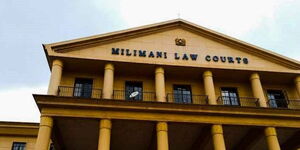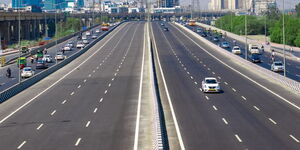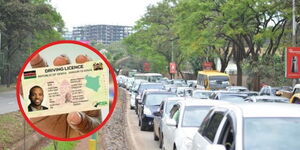An online debate ensued over Kenya's tax to Growth Domestic Product (GDP) ratio between President Uhuru Kenyatta and former President Mwai Kibaki's regime.
Tax to GDP ratio represents the size of a country's tax kitty relative to its GDP, the monetary value of all finished goods and services made within a country during a specific period. A comparison between Kenyatta's and Kibaki’s tenure in the last seven years highlighted that Kenyatta's administration has not seen a consistent uptick in tax to GDP ratios.
Yet, in the seven years to the end of former President Mwai Kibaki's term, the increase in tax revenue largely kept up with economic growth. Kibaki's tenure saw Tax to GDP maintained at 22%, to 23.1% between 2007 and 2013. In Kenyatta's tenure, the curve has fallen with Tax to GDP declining from 20.1% to 14% between 2013 and 2020. Nicholas Gachara, a financial analyst based in Nairobi further explained the difference between the two while speaking Kenyans.co.ke on Thursday, July 2.
The higher the tax to GDP ratio, the better the financial position the country will be in. The ratio represents that the government is able to finance its expenditure. A higher tax to GDP ratio means that the government is able to cast its fiscal net wide and reduces a government's dependence on borrowings. As at June 2020, Kenya's debt was at Ksh 6 trillion, with half of it from external lenders.
A higher tax to GDP ratio also means that an economy's tax buoyancy is strong as the share of tax revenue rises in synchronisation with the rise in the country's GDP.
Lower tax-to-GDP ratio constrains the government to spend on infrastructure and puts pressure on the government to meet its fiscal deficit targets.
"It explains why President Kenyatta is presiding over the opening of city walkways contrary to major infrastructural projects. All tax revenue embezzled and so no money for development," one David Munene stated joining a number of netizens who criticised Kenyatta.
Others defended and tried to clarify the reason for the decline in the curve.
"The answer is very simple. GDP growth during Kenyatta's regime has not been driven by increased productivity (investment and consumer spending). Rather, an increase in government spending and inflation (do not add to tax revenue). Real GDP, not nominal GDP is ideal for comparison," Charles Kiumba defended.
Nicholas Gachara, a financial analyst explained that Kenyatta had two options to raise money and that was through borrowing or taxing Kenyans more.
"Taxing the country more does not mean that the country will grow. It will have the opposite effect. if someone is earning 1,000 and was paying 200 as tax and paying 400 as tax now, they will spend less towards investments. Kenyatta has Big 4 agenda which is expensive. How to raise money is through borrowing or pushing KRA to collect more taxes and he has opted to borrow," Gachara explained.
He further noted that this was why KRA fell short of half-year revenue target (by Ksh88 billion). Corruption, he asserted, has also affected the economy which is why Kenyatta is strongly fighting against it.
He also added that a number of loans acquired under Kibaki's regime heaped pressure on Kenyatta who has to acquire loans to finance the debts and allocate them towards development.
"During Kibaki's time, we took loans and are due currently. Those loans are affecting Uhuru's regime. Meaning it has to look for more money to pay that debt. The reduction of VAT from 16% to 14% also allows Kenyans to spend more on the economy," Gachara opined.












